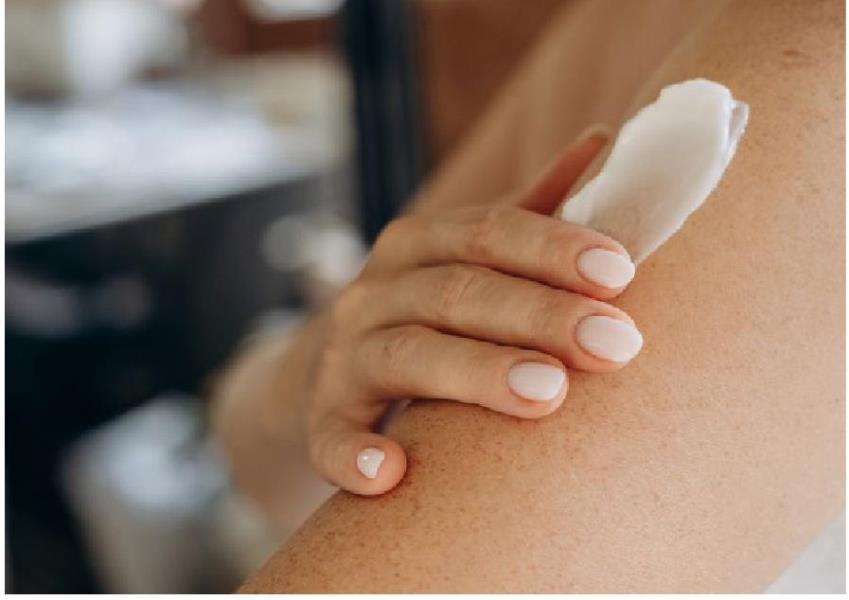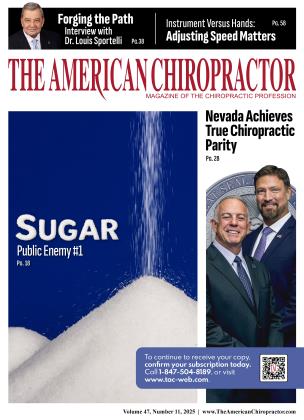
TOPICAL THERAPIES OFFER A HIGHLY ATTRACTIVE ROUTE OF ADMINISTRATION that is noninvasive, bypasses first-pass metabolism, and is convenient for patients, which can improve compliance. However, delivering biologies through the skin remains a major challenge. The stratum corneum, the skin’s outermost layer, is densely packed with lipids and keratin, forming a robust barrier that blocks most biologic agents.1
Mesenchymal stem cell-derived extracellular vesicles (MSC-EVs) offer a promising therapeutic approach to treat several dermatologic and musculoskeletal diseases. These nanoscale messengers, ranging from 30 to 150 nm, are naturally enclosed in a lipid bilayer and carry bioactive molecules such as cytokines, growth factors, and lipids that promote tissue repair and modulate inflammation.2
On their own, MSC-EVs have limited transdermal penetration capabilities. Their lipid membranes can briefly loosen the stratum corneum’s lipid matrix, allowing small-scale passive diffusion through hair follicles3 and sweat glands,4 but only a fraction of vesicles reach deeper layers.5
Formulation strategies can improve delivery. Penetration enhancers like dimethyl sulfoxide (DMSO) and camphor are used in FDA-approved topical drugs for arthritis. DMSO is amphiphilic, disrupting lipid packing, altering keratin structure, and increasing hydration to create transient pathways.6 Camphor, a small lipophilic terpenoid, disrupts stratum corneum organization to boost permeability.7 Another approach is hybridization, where MSCEVs are coated or fused with synthetic lipid nanoparticles engineered for greater stability and skin penetration.8
Once inside the viable epidermis and dermis, MSC-EVs can deliver their bioactive cargo directly to local cells or be transported to deeper musculoskeletal tissues.9 This ability opens possibilities for noninvasive treatment of joint and tendon injuries, inflammatory arthropathies, and other connective tissue disorders
Topical MSC-EV therapies are gaining traction in clinical research. In a phase one trial, a topical MSC-EV formulation for psoriasis was well tolerated.10 Another study reported reduced melanin production in hyperpigmentation disorders.12
Preclinical research is exploring hydrogel embedding and genetic engineering of parent cells to enhance vesicle stability and penetration.11 These continued advances open the door for effective MSC-EV-based therapies for musculoskeletal diseases without the need for injections or invasive procedures.

Dr. Adam Brockman, DC, ND, co-host of America’s #1 health talk radio show, nationally recognized speaker, and regenerative medicine expert is a dual-doctorate in chiropractic and naturopathy. His clinical experience ranges from founding the Complete Wellness
Companies, a nationally recognized regenerative medicine practice network, to developing topical pain relief products. To contact Dr. Brockman visit NuvoCellbiologics.com.

Dr. Sean Vandersluis earned his PhD in Biochemistry from McMaster University in 2024, where he investigated how stem cell biology un-derlies cancer progression. His research led to the discovery of nov-el therapeutics targeting cancer stem cells and the development of a personalized medicine platform based on cancer stem cell biology. To contact Dr. Vanderlsluis email
References
1. Matsui T, Amagai M. Dissecting the fonnation, structure and barrier function of the stratum corneum. hit Immunol. 2015 Jun;27(6):269-80. doi: 10.1093/intimm/dxv013. Epub 2015 Mar 26. Erratum in: Int Immunol. 2017 May l;29(5):243-244. doi: 10.1093/intimm/dxx024. PMID: 25813515.
2. Maqsood M, Kang M, Wu X, Chen J, Teng L, Qiu L. Adult mesenchymal stem cells and their exosomes: Sources, characteristics, and application in regenerative medicine. Life Set. 2020 Sep 1:256:118002. doi: 10.1016/j.lfs.2020.118002. Epub 2020 Jun 29. PMID: 32585248.
3. Cheng M, Ma C, Chen HD, Wu Y, Xu XG. The roles of exosomes in regulating hair follicle growth. Clin Cosmet Investig Dermatol. 2024 Jul 5:17:1603-1612. doi: 10.2147/CCID.S465963. PMID: 38984321: PMCID: PMC11232880.
4. Weng T, Wu P, Zhang W, Zheng Y, Li Q, Jin R, Chen H, You C, Guo S, Han C, Wang X. Regeneration of skin appendages and nerves: current status and further challenges. J Transl Med. 2020 Feb 3:18(1):53. doi: 10.1186/sl2967-020-02248-5. PMID: 32014004: PMCID: PMC6996190.
5. Yepes-Molina L, Martinez-Ballesta MC, Carvajal M. Plant plasma membrane vesicles interaction with keratinocytes reveals their potential as carriers. J Adv Res. 2020 Feb 8:23:101-111. doi: 10.1016/j.jare.2020.02.004. PMID: 32089878: PMCID: PMC7025959.
6. Marren K. Dimethyl sulfoxide: an effective penetration enhancer for topical administration of NSAIDs. Phys Sportsmed. 2011 Sep:39(3):75-82. doi: 10.3810/psm.2011.09.1923. PMID: 22030943.
7. Chen J, Jiang QD, Chai YP, Zhang H, Peng P, Yang XX. Natural terpenes as penetration enhancers for transdermal drug delivery. Molecules. 2016 Dec ll:21(12):1709. doi: 10.3390/molecules21121709. PMID: 27973428: PMCID: PMC6273457.
8. Rodriguez DA, Vader P. Extracellular vesicle-based hybrid systems for advanced drug delivery. Pharmaceutics. 2022 Jan 23; 14(2):267. doi: 10.3390/phannaceuticsl4020267. PMID: 35214000: PMCID: PMC8878585.
9. Mulcahy LA, Pink RC, Carter DR. Routes and mechanisms of extracellular vesicle uptake. J Extracell Vesicles. 2014 Aug 4:3. doi: 10.3402/ jev.v3.24641. PMID: 25143819: PMCID: PMC4122821.
10. Chandran NS, Bhupendrabhai MN, Tan TT, Zhang B, Lim SK, Choo ABH, Lai RC. A phase 1, open-label study to determine safety and tolerability of the topical application of mesenchymal stem/stromal cell (MSC) exosome ointment to treat psoriasis hi healthy volunteers. Cytotherapy. 2025 May;27(5):633-641. doi: 10.1016/j. jcyt.2025.01.007. Epub 2025 Jan 23. PMID: 39918488.
11. Bhat A, Malik A, Yadav P, Ware WPJ, Kakalij P, Chand S. Mesenchymal stem cell-derived extracellular vesicles: Recent therapeutics and targeted drug delivery advances. Journal of Extracellular Biology. 2025 May:3(5). doi:/10.1002/jex2.156
12. Cho BS. Lee J, Won Y, Duncan DI, Jin RC, Lee J, Kwon HH, Park GH, Yang SH, Park BC, Park KY, Youn J, Chae J, Jung M, Yi YW. Skin Brightening efficacy of exosomes derived from human adipose tissue-derived stem/stromal cells: a prospective, split-face, randomized placebo-controlled study. Cosmetics. 2020 Nov:7(4),90. doi: 10.3390/ cosmetics7040090.
 View Full Issue
View Full Issue






